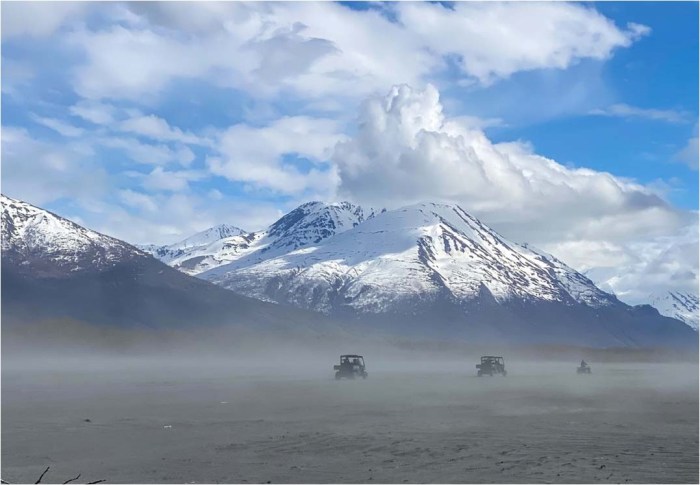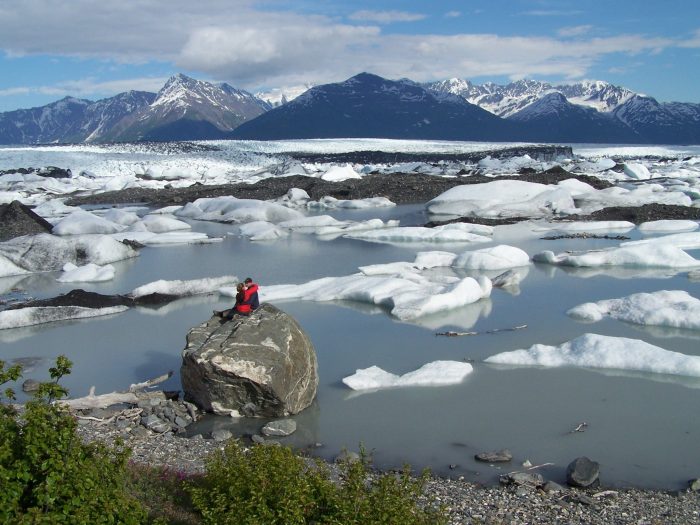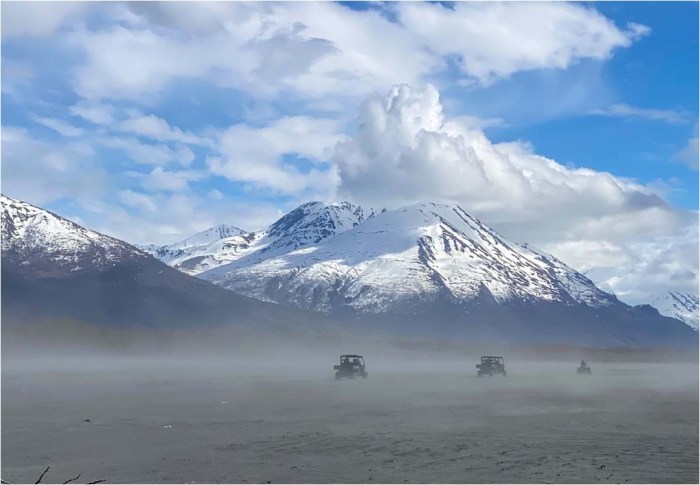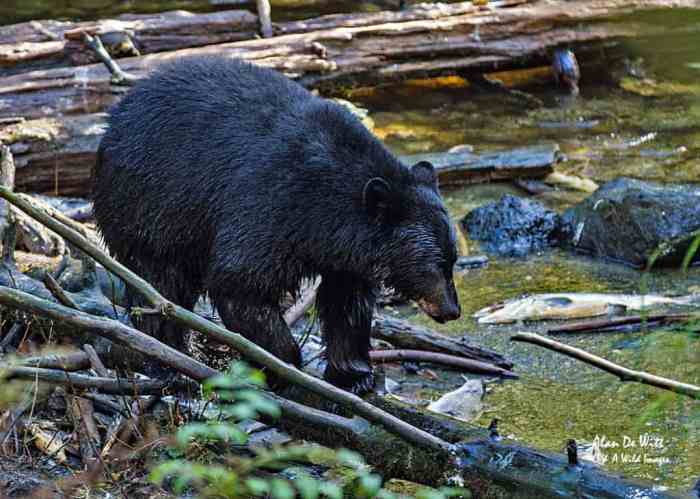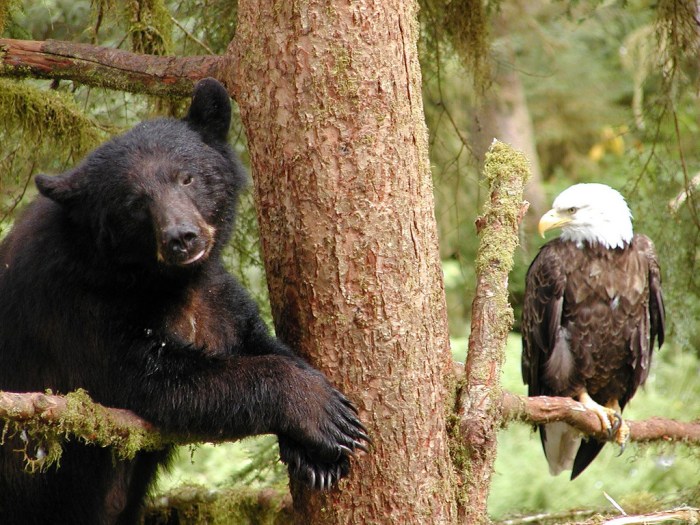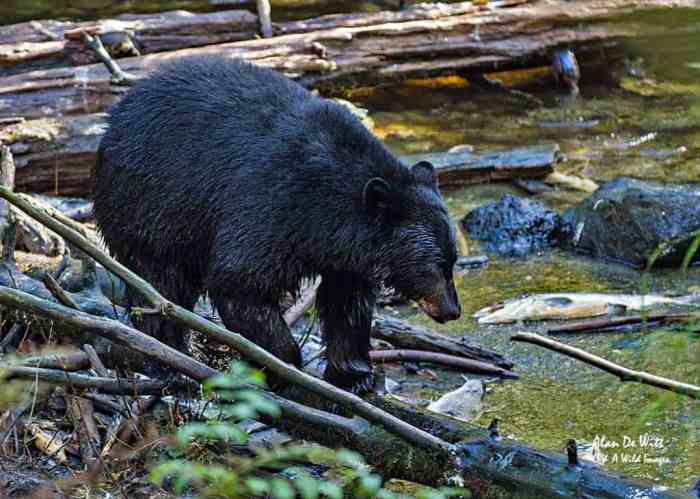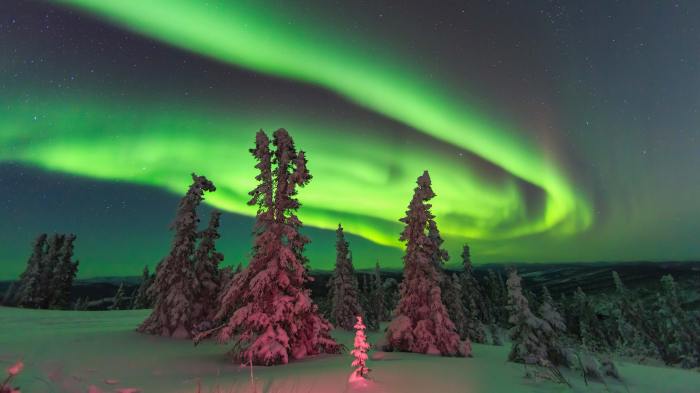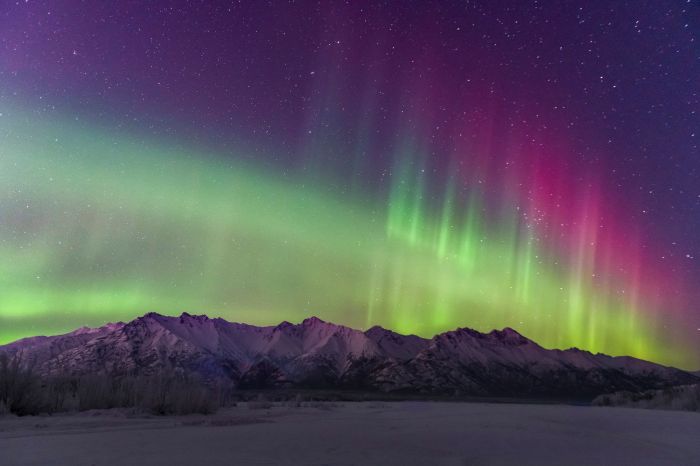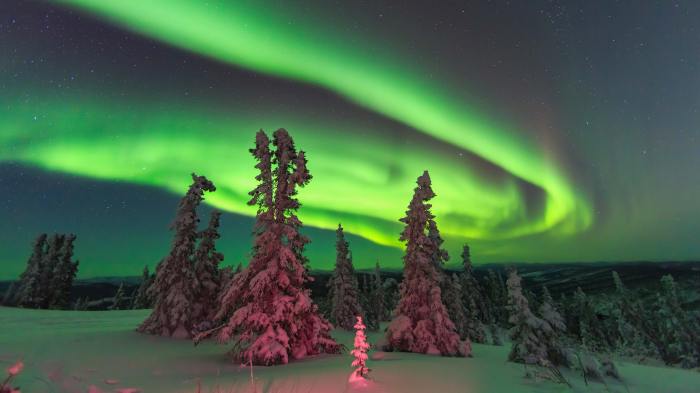Plan fishing trip in Alaska, a dream for many anglers. Imagine casting a line into pristine Alaskan waters, battling for a trophy fish amidst breathtaking scenery. This comprehensive guide will walk you through every step, from essential planning to packing your gear, ensuring your Alaskan fishing expedition is unforgettable.
We’ll cover everything from the different types of fishing available, considering species, locations, and seasons, to the various accommodations and transportation options. Budgeting is crucial, so we’ll delve into costs for licenses, gear, lodging, and food. Understanding the regulations and permits needed is also vital, along with choosing the perfect fishing destination. Finally, we’ll provide a sample itinerary to help you plan your dream Alaskan fishing trip.
Trip Planning Considerations
Planning a fishing trip to Alaska requires careful consideration of various factors to ensure a successful and enjoyable experience. From choosing the right gear and accommodations to understanding the transportation options, meticulous preparation is key. This detailed guide will walk you through the essential aspects of planning your Alaskan fishing adventure.Alaska offers unparalleled fishing opportunities, with diverse species and stunning landscapes.
Understanding the specific fishing types, locations, and seasons will help you maximize your chances of catching your dream fish. This section will cover the various types of fishing available, the ideal locations for each, and the necessary equipment to prepare you for your Alaskan adventure.
Essential Items for a Fishing Trip
Careful planning includes assembling the necessary equipment and supplies. A comprehensive list of essential items will ensure you’re well-prepared for your fishing expedition.
| Item | Description | Estimated Cost |
|---|---|---|
| Fishing License | Essential for legal fishing in Alaska. | $50 – $150 (depending on type and duration) |
| Fishing Rod and Reel | Essential fishing equipment. | $100 – $500+ (depending on quality) |
| Tackle Box | Container for holding fishing lures, hooks, and other equipment. | $20 – $100 |
| Waders | Waterproof boots and trousers for wading in rivers and streams. | $50 – $200 |
| Insect Repellent | Essential for protection from mosquitoes and other biting insects. | $10 – $30 |
| Sunscreen | Protection from the strong Alaskan sun. | $10 – $20 |
| First-Aid Kit | Essential for minor injuries. | $20 – $50 |
| Cooler | To keep your catch fresh. | $20 – $100 |
| Navigation tools | Maps, GPS, compass for navigation, especially if fishing in remote areas. | $20 – $200+ (depending on sophistication) |
| Appropriate clothing | Layers for fluctuating temperatures, including rain gear. | Variable |
Types of Fishing in Alaska
Alaska offers diverse fishing experiences, catering to various interests and skill levels. Understanding the different types of fishing and the species they target will help you choose the best option for your trip.
Planning a fishing trip in Alaska is super exciting, but finding the perfect family ski resort for a pre-trip getaway is equally important! For the best value, I highly recommend checking out this list of family ski resorts family ski resort best value. It’s a great way to recharge and get everyone ready for the big Alaskan adventure.
The perfect mix of relaxation and excitement will definitely make your fishing trip in Alaska even more memorable.
| Species | Location | Season | Average Size |
|---|---|---|---|
| King Salmon | Kenai River, Copper River | May-August | 20-40 lbs |
| Sockeye Salmon | Bristol Bay | June-August | 5-10 lbs |
| Rainbow Trout | Various lakes and rivers | Spring-Fall | 1-5 lbs |
| Halibut | Coastal waters | Spring-Fall | 20-50 lbs |
| Dolly Varden | Various lakes and rivers | Spring-Fall | 3-8 lbs |
Accommodation Options
Alaska offers various lodging options, from rustic cabins to luxurious lodges. Choosing the right accommodation depends on your budget and preferences.
| Accommodation Type | Amenities | Price Range | Proximity to Fishing Spots |
|---|---|---|---|
| Fishing Lodges | Full amenities, meals, guides, equipment rentals | $500-$5000+ per person per day | Usually very close to fishing spots |
| Cabins | Basic amenities, self-catering | $100-$500 per night | Variable, depending on location |
| Boats | Accommodation on board a fishing boat | $300-$1500 per day per person | Very close to fishing spots |
Transportation Options
Reaching your fishing destination in Alaska requires careful consideration of transportation options. Flights, driving routes, and other modes of transportation are all factors to consider.
| Transportation Option | Description | Pros | Cons |
|---|---|---|---|
| Flights | Air travel to Alaskan destinations | Fastest option | Can be expensive, limited accessibility to remote areas |
| Driving Routes | Driving to Alaskan fishing locations | Flexibility, scenic views | Long distances, challenging terrain, potentially expensive fuel costs |
| Boats | Ferry or other boat travel | Access to remote areas, unique experience | Slowest option, weather dependent |
Budgeting and Costs
Planning a fishing trip to Alaska requires careful consideration of expenses. Beyond the excitement of catching fish, a realistic budget helps ensure a smooth and enjoyable experience. This section will detail the expected costs for a week-long trip, providing a clear picture of the financial commitment involved.Understanding the various costs associated with Alaskan fishing trips is essential for effective planning.
Planning a fishing trip in Alaska is awesome, but choosing the right South Pacific island for your next vacation could be equally exciting! Think about crystal-clear waters and vibrant coral reefs, and how to best pick the perfect island for you. Refer to this helpful guide on how to choose a south pacific island to make your decision easier.
Ultimately, a well-researched fishing trip to Alaska is just as important and fulfilling.
This includes not only lodging and transportation but also the specific licenses and permits needed, the gear required, and the anticipated food expenses. Accurate cost estimates allow for proactive financial planning and help avoid unexpected surprises during the trip.
Sample Budget for a Week-Long Trip
A comprehensive budget for a week-long fishing trip in Alaska should include lodging, transportation, fishing licenses, gear, and food. The following table provides a sample budget, designed to be a starting point and can be adjusted based on individual preferences and choices.
| Category | Estimated Cost |
|---|---|
| Lodging (e.g., cabin rental) | $1,000 – $1,500 |
| Transportation (e.g., flights, rental car) | $500 – $1,000 |
| Fishing Licenses & Permits | $200 – $400 |
| Fishing Gear (rods, reels, tackle) | $300 – $500 |
| Food | $300 – $500 |
| Charters (if applicable) | $1,000 – $3,000+ |
| Contingency Fund | $200 – $500 |
| Total Estimated Cost | $3,000 – $7,000+ |
Fishing Licenses and Permits Costs
Obtaining the necessary fishing licenses and permits is crucial for legal fishing in Alaska. Different regions have varying license fees. The following table provides an overview of typical costs.
| Region | License Type | Cost |
|---|---|---|
| Southeast Alaska | Sport Fishing License | $100-$150 |
| Kenai Peninsula | Sport Fishing License | $100-$150 |
| Kodiak Island | Sport Fishing License | $100-$150 |
| Fairbanks | Sport Fishing License | $100-$150 |
| Note: Costs can vary depending on the specific type of license required and season. |
Average Cost of Fishing Gear, Plan fishing trip in alaska
Selecting appropriate fishing gear is essential for a successful Alaska fishing trip. The following table provides a range of costs for different gear items, including recommended brands.
| Gear Item | Estimated Cost | Recommended Brand |
|---|---|---|
| Fishing Rod (e.g., saltwater spinning rod) | $50 – $200 | Shimano, Penn, Daiwa |
| Fishing Reel (e.g., saltwater spinning reel) | $50 – $200 | Shimano, Penn, Daiwa |
| Fishing Tackle (e.g., lures, hooks, line) | $50 – $150 | Berkley, Gamakatsu, Mustad |
| Note: Higher-end gear will cost more, but may offer better performance and durability. |
Fishing Charter Prices
Fishing charters offer guided trips, providing expertise and equipment. Pricing varies depending on the type of charter and services included.
| Charter Type | Price Range | Services Included |
|---|---|---|
| Half-day charter | $500 – $1,500 | Boat, guide, tackle, and sometimes lunch |
| Full-day charter | $1,000 – $3,000+ | Boat, guide, tackle, and sometimes lunch |
| Multi-day charter | $2,000 – $10,000+ | Boat, guide, tackle, and sometimes meals |
| Note: Prices vary greatly depending on the type of fishing, region, and boat size. |
Regulations and Permits

Navigating Alaska’s fishing regulations can feel like a complex puzzle. Knowing the specific rules and permits needed for your chosen fishing spot and species is crucial to a smooth and legal trip. This section will detail the necessary steps to ensure you’re fishing within the bounds of the law.Understanding Alaska’s fishing regulations is vital for a safe and responsible trip.
Failure to comply can result in hefty fines and the revocation of fishing privileges. This section will guide you through the permits, licenses, and gear restrictions required for various Alaskan fishing experiences.
Fishing Regulations by Species and Location
Alaska’s fishing regulations vary significantly by species and location. Different bodies of water have different limits and seasons. This complexity underscores the importance of thorough research. The table below provides a general overview.
| Species | Location | Season | Daily Limit |
|---|---|---|---|
| Rainbow Trout | Kenai River | June-September | 6 |
| King Salmon | Bristol Bay | June-August | 2 |
| Halibut | Kodiak Island | April-October | 1 |
| Sockeye Salmon | Lake Clark National Park | July-August | 5 |
Note: This is a simplified table. Always consult the Alaska Department of Fish and Game website for the most up-to-date and specific regulations for your target species and location.
Necessary Permits for Fishing Areas
Several permits might be required for accessing specific fishing areas in Alaska. These often relate to the specific area’s regulations and conservation efforts. This includes permits for areas with restricted access or for certain types of fishing techniques.
- Special Access Permits: These permits are required for certain areas that have limited fishing access. They’re typically needed for remote locations or areas with specific conservation needs.
- Sport Fishing Permits: These are generally required for commercial or recreational fishing, and the type of permit will depend on the location and intended species.
- Commercial Fishing Permits: For commercial fishing operations, the permits and licensing requirements are far more complex. They often include quotas, reporting requirements, and specific gear restrictions.
Types of Fishing Licenses and Costs
Alaska offers various fishing licenses, each with its own cost and validity period. The cost and duration depend on the type of license, including daily, annual, and combination licenses.
- Sport Fishing Licenses: These licenses are for recreational fishing. Prices vary based on the length of validity and whether it’s for a single person or a group. Some licenses are valid for the entire year, others are valid for a specific season or a shorter period.
- Combination Licenses: These often include hunting and fishing privileges, offering cost savings for those engaging in both activities. Prices vary depending on the duration of the license.
Fishing Gear and Techniques Regulations
Specific rules govern the use of fishing gear and techniques in Alaska. Regulations aim to ensure sustainable fish populations and fair angling opportunities.
- Gear Restrictions: Certain fishing gear types might be prohibited or limited to specific areas. These restrictions may pertain to the size of hooks, the type of line, or the number of fishing rods allowed. This ensures that fishing practices do not harm the environment or the fish populations.
- Fishing Techniques: Some techniques are restricted in certain areas. For example, using certain types of nets or traps might be prohibited in some locations. This aims to protect fish populations and ensure fair angling practices.
Choosing a Fishing Destination: Plan Fishing Trip In Alaska
Alaska’s diverse landscapes and abundant fish offer a plethora of angling opportunities. Deciding where to cast your line depends heavily on the type of fishing you’re after, the time of year, and your desired experience. Whether you crave the thrill of a trophy halibut or the serene beauty of a fly-fishing stream, Alaska has a destination to suit your needs.Understanding the different fishing regions, the best seasons for various species, and the appropriate boat types are crucial to a successful and enjoyable fishing trip.
This section delves into the specifics of choosing the right spot for your Alaskan angling adventure.
Popular Fishing Destinations in Alaska
Alaska boasts numerous fishing destinations, each with its own unique charm and specialties. The Kenai Peninsula, renowned for its halibut and salmon fishing, provides opportunities for large-scale sport fishing. Southeast Alaska, with its fjords and pristine waters, caters to anglers seeking a more intimate and challenging experience, often focusing on smaller species like salmon and trout. The Prince William Sound region, with its diverse ecosystem, provides access to a wide array of fish, from king salmon to halibut.
The Inside Passage, a network of waterways, offers diverse fishing opportunities, including salmon, steelhead, and various other species.
Best Time of Year for Specific Fishing
The optimal time to visit Alaska for specific fish species varies significantly. For example, spring offers exceptional opportunities for king salmon in the Kenai River, while fall is ideal for salmon fishing throughout the state. The timing is influenced by the life cycle of the fish, with migrations and spawning seasons dictating peak activity. Consider the specific species you want to target and research the ideal time for their presence in the selected region.
Types of Fishing Boats and Suitability
The selection of a fishing boat depends greatly on the type of fishing and the desired experience. A smaller, maneuverable boat is often preferable for nearshore fishing, while a larger vessel might be essential for targeting pelagic species like halibut in open waters. A fly fishing trip may require a very small, quiet boat. Factors like the number of anglers, the type of fishing being pursued, and the desired level of comfort are all important considerations when choosing a boat.
Fishing Techniques for Alaska’s Diverse Environments
Alaska’s varied fishing environments necessitate different fishing techniques. Trolling, a method of pulling lures or bait behind a moving boat, is effective for targeting larger species like salmon and halibut. Fly fishing, with its emphasis on delicate presentations, is well-suited to the quieter streams and rivers of the state. Bottom fishing, employing heavy tackle to target species found on the seabed, can be successful in certain locations.
Planning a fishing trip in Alaska is exhilarating! But before you book that charter, consider a fun day trip to the National Harbor in Washington D.C. Checking out the best spots for a day trip there, like best national harbor washington dc daytrip , might give you some ideas for downtime activities, before you get fully immersed in the Alaskan wilderness.
Ultimately, the trip to Alaska is the main goal, but a little pre-trip relaxation can be quite beneficial.
Jigging, a method involving jigging lures to entice fish, is effective for species that inhabit deeper waters. Consider the specific fishing method suited to the targeted species and the environment of the chosen fishing destination.
Packing and Gear

Alaska fishing trips demand meticulous planning, especially when it comes to gear and clothing. Choosing the right equipment is crucial for a successful and safe adventure, allowing you to focus on the thrill of the catch rather than worrying about inadequate supplies. Proper preparation ensures a comfortable and enjoyable experience in the unpredictable Alaskan wilderness.
Essential Fishing Gear
Essential fishing gear is paramount for a productive and safe Alaskan fishing expedition. A well-stocked tackle box and appropriate rods are critical for success. This section Artikels the necessary equipment.
- Rods: Different species of fish in Alaska require different rod types. A variety of rods, such as spinning, baitcasting, and fly rods, is beneficial. Spinning rods are excellent for smaller fish, while baitcasting rods are suitable for larger species. Fly rods are ideal for fly fishing, a popular method in Alaska.
- Reels: Matching reels to your rods is essential. Consider the type of fishing you plan to do and the size of fish you expect to catch. Choose reels with appropriate line capacity and drag systems.
- Line Types: Line strength is crucial for fighting and landing fish. Choose lines appropriate for the expected fish size and the water conditions.
- Tackle: Essential tackle includes hooks, lures, sinkers, bobbers, and swivels. The specific type of tackle will depend on the fishing method and the target species.
Clothing for Alaskan Conditions
Alaska’s weather is notoriously unpredictable. Layering clothing is essential for maintaining comfort and warmth throughout the trip.
- Base Layers: Moisture-wicking base layers are crucial for keeping you dry and warm. Wool or synthetic fabrics are ideal.
- Mid-Layers: Insulating mid-layers, such as fleece or down jackets, provide additional warmth.
- Outerwear: A waterproof and windproof outer shell is critical for protection against rain, snow, and wind. Consider a waterproof jacket and pants.
- Footwear: Durable waterproof boots are essential for walking on uneven terrain and through potentially wet conditions. Consider insulated, waterproof hiking boots.
- Gloves and Hats: These are vital for keeping your hands and head warm, especially in cold weather. Look for waterproof and insulated options.
Safety Gear
Safety is paramount in Alaska’s remote fishing areas. The following gear is crucial for ensuring a safe trip.
- Personal Flotation Device (PFD): A PFD is essential for any water activity in Alaska. Choose a properly fitted and reliable PFD.
- First-Aid Kit: A well-stocked first-aid kit is vital for treating minor injuries. Include bandages, antiseptic wipes, pain relievers, and any personal medications.
- Communication Device: A satellite phone or personal locator beacon (PLB) can be critical for emergencies in remote areas. Confirm coverage and charging capabilities before the trip.
- Navigation Tools: Maps, compasses, and GPS devices are essential for navigation, especially in remote areas.
Packing Fishing Gear for Transportation
Transporting fishing gear to Alaska requires careful planning. Protection against damage and loss is essential.
- Protective Cases: Use protective cases or bags for rods, reels, and other delicate gear to prevent damage during transit.
- Durable Containers: Use sturdy containers or boxes for tackle, lures, and other items.
- Proper Strapping and Securing: Secure all gear during transportation to prevent shifting or damage.
- Check Airline Regulations: Understand airline regulations regarding the size and weight of checked luggage to avoid potential issues.
Sample Itinerary
Planning a 7-day Alaskan fishing adventure is exciting! This itinerary balances fishing with sightseeing and relaxation, ensuring you make the most of your trip. It’s a template, adaptable to your preferences and the specific fishing opportunities available. Remember to check for updated regulations and fishing season details before you go.
Daily Activities
This itinerary Artikels a variety of activities, from dedicated fishing time to exploring the Alaskan wilderness. Each day is designed to be engaging and enjoyable, but adaptable to your pace.
- Day 1: Arrival and Settling In. Upon arrival at your chosen lodge or cabin, you will unpack and get acquainted with your surroundings. Enjoy a welcome dinner and relax after the journey.
- Day 2: Introduction to the River. Start your fishing adventure with a guided tour of the local river or lake. Learn the best spots, techniques, and regulations. Incorporate a short hike or wildlife viewing to immerse yourself in the environment. Evening relaxation.
- Day 3: Intensive Fishing. Focus on maximizing your fishing time. Explore various fishing locations and try different tactics. Enjoy a leisurely lunch on the water or at a scenic spot. The evening could include a campfire and storytelling.
- Day 4: Sightseeing and Wildlife. Visit a nearby park, glacier, or town. Opportunities for wildlife viewing (bears, eagles, moose) abound. This is a great day to photograph the Alaskan scenery. The afternoon could involve a scenic boat tour.
- Day 5: Another Fishing Day. A dedicated fishing day, allowing you to target specific fish or explore new fishing spots. Pack a delicious lunch to enjoy amidst the beauty of the wilderness.
- Day 6: Relaxation and Reflection. Enjoy a leisurely morning of fishing, or take a guided kayaking tour. Visit a local museum or town. Evening could include a farewell dinner at your lodge.
- Day 7: Departure. Enjoy a final Alaskan breakfast before heading to the airport for your departure. Reflect on your incredible adventure!
Transportation and Lodging
Choosing your transportation and lodging is critical for a smooth and enjoyable trip. Consider factors like comfort, accessibility, and budget. Flights, chartered boats, or fishing lodges provide various options.
- Transportation: Flights to a nearby airport, followed by a shuttle or private vehicle to your lodge. Boat charters or fishing vessels might be incorporated into the trip. Consider arranging transportation for sightseeing activities.
- Lodging: Fishing lodges often provide meals and guided services. Cabin rentals or hotels near fishing spots are also viable options. These will offer varying degrees of comfort and amenities. Select accommodation that suits your needs and budget.
Relaxation Time
Incorporating relaxation is key to a successful Alaskan fishing trip. Schedule breaks between fishing sessions, allowing time for relaxation, reflection, and enjoying the Alaskan atmosphere.
- Breaks: Don’t overschedule your fishing days. Allow for breaks between fishing sessions to unwind and enjoy the scenery.
- Activities: Combine fishing with wildlife viewing, sightseeing, and exploring the natural beauty of Alaska. These activities help you relax and recharge.
- Evening Activities: Enjoy the serenity of the Alaskan wilderness by the campfire, with a book, or by stargazing.
Estimated Time Allocation
This table provides an approximate schedule for your activities. Remember that this is a template and can be adjusted based on your preferences and the fishing conditions.
| Day | Activity | Location | Estimated Time (hours) |
|---|---|---|---|
| 1 | Arrival, Settling In | Lodge/Cabin | 2-4 |
| 2 | Guided River Tour, Wildlife Viewing | River/Lake, Park | 6-8 |
| 3 | Intensive Fishing | River/Lake | 8-10 |
| 4 | Sightseeing, Wildlife Viewing | Park, Glacier, Town | 6-8 |
| 5 | Fishing | River/Lake | 8-10 |
| 6 | Kayaking, Sightseeing, Dinner | River/Lake, Town | 6-8 |
| 7 | Departure | Airport | 4-6 |
Ending Remarks
In conclusion, planning a fishing trip in Alaska requires careful consideration of various factors. From choosing the right destination and accommodation to understanding regulations and budgeting, this guide provides a roadmap for a successful trip. Remember to research specific locations and species, factor in costs, and be prepared for all eventualities. With thorough planning, your Alaskan fishing adventure will be one you’ll cherish for years to come.

